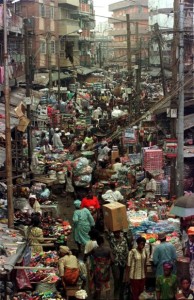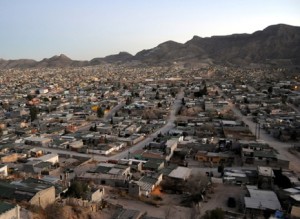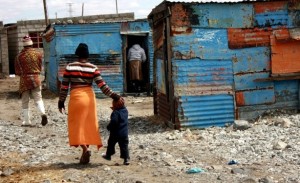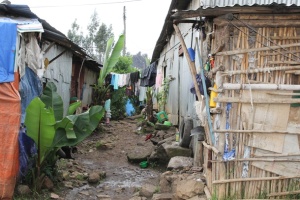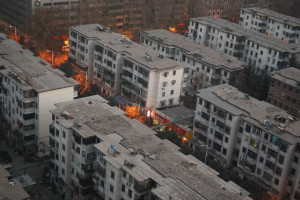capetownpartnership – Five Reasons Africa Needs To Reinvent The City
www.capetownpartnership.co.za. August 2014. Africa’s cities are facing some exciting, frightening and rapid change. UN-Habitat’s latest “State of African Cities” report attempts to map this change and create a tool for future-oriented urban planning. What are some of the insights of the report, and what can Cape Town as an African city learn from this?
How dense are Africa’s cities? How developed is their infrastructure? How rapidly are they growing and sprawling? What factors – economic, environmental, political – are affecting the way people live in cities? How do Africa’s cities impact the environment? These are just some of the questions being addressed in the 2014 “State of African Cities Report”, published by UN-Habitat. The report is the third in a series that attempts to measure and map crucial urban trends in Africa, with a view of creating a tool for effective policy-making.
“The main premise of this report is that effectively addressing the vulnerabilities and risks to which the African populations are increasingly being exposed may, perhaps, require a complete rethinking of current urban development trajectories if sustainable transitions are to be achieved,” wrote Joan Clos, executive director of UN-Habitat, in his introduction. His sentiment is echoed by many journalists, such as Marelise van der Merwe, who recently wrote about how Africa’s cities are “crying out for re-imagination” in the Daily Maverick. With the help of the report, we have identified five reasons why planning for Africa needs to be extra-imaginative.
Read more: http://www.capetownpartnership.co.za/2014/08/five-reasons-africa-is-reinventing-the-city/
MITVideo – Urban Studies And Planning
Urban studies and Planning at MIT is organized around the following core questions of engagement and progressive change: “Can we make a difference in the world? Can we design better cities? Can we help places grow more sustainably? Can we help communities thrive? Can we help advance equitable world development?”
http://video.mit.edu/channel/urban-studies-and-planning/
Raeesa Pather – South Africa: Urban Planners Must Prepare For More Slums
allafrica.com. August 2014. Over our 20-year democracy, South Africans have struggled to improve life for people living in informal settlements. We are not alone in this – slums are a reality, from Venezuela to Islamabad, and the world is bracing itself for more.
A recent report from Foreign Policy shows that urbanisation is quickly accelerating. In 1950, 29% of the world’s population built their homes in cities, but in 2014 more than 50% of the global population lives in cities. This trend shows no signs of stopping – the UN estimates that a third of the world’s population will live in slums by 2050.
“The growth of slums is a bit like climate change: We know it’s happening. We know it’s important. But no one, so far, seems to have much of a response,” writes Prachi Vidwans for Foreign Policy.
In India, a local government has given a nod to building 10 000 new “transit accommodations” for displaced slum inhabitants. In Venezuela, the infamous 45-storey “Tower of David” building has been evicted, with residents now living in government subsidised housing on the outskirts of the city.
Read more: http://allafrica.com/stories/
Amina Mohammed – Living In Nyanya Labour Camp, One Of Abuja’s Filthiest Slums
 August 2014. On a recent Sunday afternoon, Gloria Akan walks out of a small cubicle behind her house where she had answered the nature’s call.
August 2014. On a recent Sunday afternoon, Gloria Akan walks out of a small cubicle behind her house where she had answered the nature’s call.
At the Nyanya labour camp, one of Abuja’s poorest slums, where she lives, Mrs. Akan and her family have used the latrine inside the cubicle for the last two years. Yet, she dreads the thought of returning there each time she is pressed. Her greatest worry, however, is that her family shares the little latrine and a bathroom with five other families. Due to overuse, the toilet facilities have broken down, with coloured stinking water dripping from one of the pipes inches away from her bedroom window. The Akans are only one among hundreds who live under terrible conditions at the Nyanya Labour Camp, a 20-minute drive from the Abuja city centre. The camp was originally built by the Federal Government over 30 years ago to accommodate the labourers who built the Abuja city. The houses were designed for one occupant per room, with the rooms facing each other. The rooms are built in clusters of five in a section for the lowest class and six-room-in-a-row blocks of one bedroom flats for others. After the labourers left, the Abuja administration transferred the houses to civil servants and low ranking police officers.
See more at: https://www.premiumtimesng.com/living-in-nyanya
Cordaid – What Matters In Urban Ethiopia?
Cordaid. August 2014. With estimated 10% sewerage connection coverage, Addis Ababa has a lot to worry about its liquid waste management. A possible answer to the problem: the Sanitation Value Chain – a smart solution for liquid waste management in Addis Ababa.
The Sanitation Situation
Poor sanitation in Addis Ababa, particularly liquid waste, is one of the challenges that affects the life of the residents and dwarfed its image as a capital of Africa. Drainage channels, streams and rivers are carrying grey and black water as a result of illegal connection by households and institutions, which is due to lack of alternatives and poor law enforcement of sewer lines. It will take years before the 100% sewerage connection, envisioned by the city government, will be realized, due to the huge investment needed of current urban planning and construction activities.
With a history of organic development defying all efforts of planning, which in turn resulted in the proliferation of slums estimated to cover more than 80% of the city, Addis Ababa has many competing development agendas that place demands on the scarce resources. In addition, the complexity of planning, design, construction and coordination tasks that slum re-development demands makes things more challenging.
Read more: https://www.cordaid.org/en/news/what-matters-urban-ethiopia/
Laura Harding & Philip Thalis – Making The City: Urban Housing
architectureau.com. August 2014. The pervasive commodification of urban housing will leave Australia’s cities with a legacy of mean-spirited, poorly-designed buildings. As Philip Thalis and Laura Harding argue, architects have both the capacity and the responsibility to champion better solutions.
From house to housing
If we want to raise the quality of living … then the most effective way of all is to improve the quality of the house … The physical state of the house reflects the economic state of the nation, directly and sensitively … However … its ability to uplift or depress: its design – has practically no vested interests pushing from behind …”
Robin Boyd emphasized the “house,” whereas today we might talk about “urban housing” and its specific architectural form, the apartment building. The need to share urban, cultural and transport resources is reinforcing compact collective living. Apartment buildings are becoming the urban signifier of the societal change that is reshaping the ways we live.
Along with the shift from suburban to urban densities, Australia has traded the innocent domesticity implicit in Boyd’s “living” for the more glib construct of “lifestyle.” Long understood to be the provision of necessary accommodation, today housing is seen through the narrow lens of “development” self-interest. As a fast track to profit via unearned income and asset inflation, housing is frequently conceived first as a market, with societal need a distant second.
Read more: http://architectureau.com/urban-housing-making-the-city/
